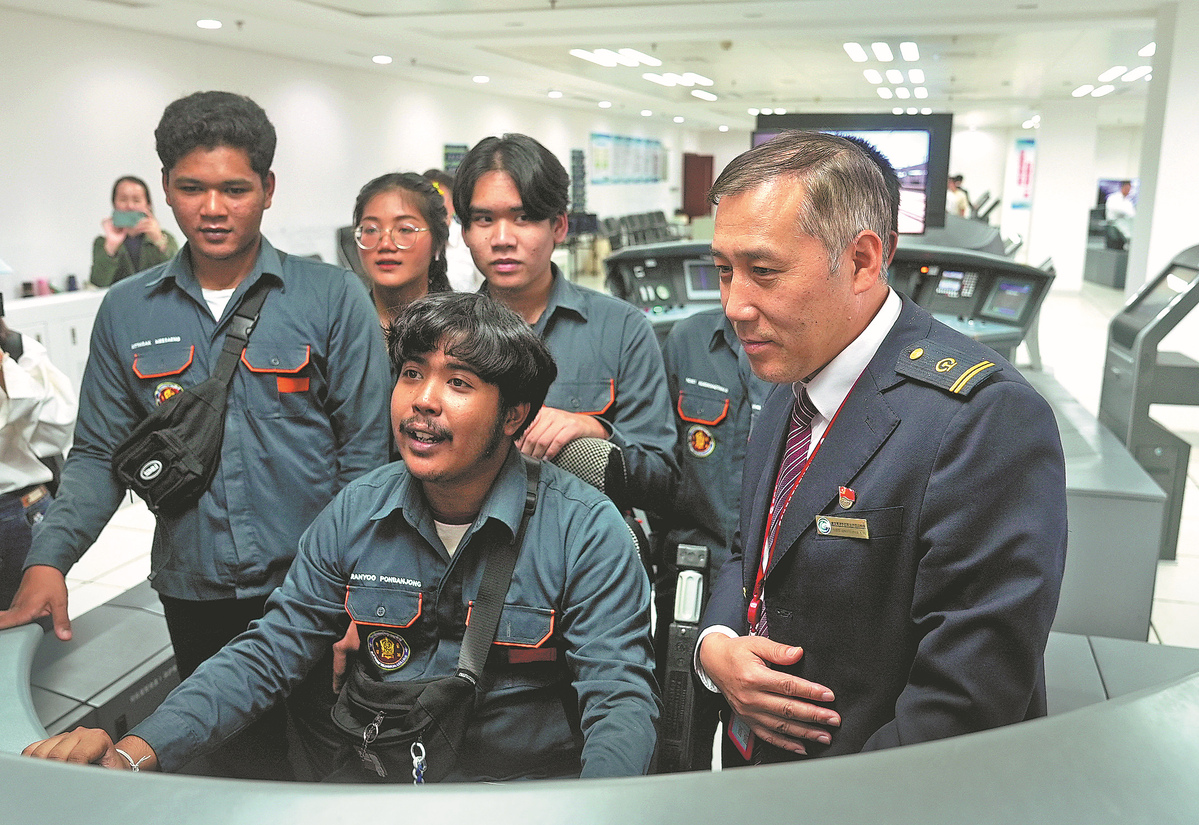Global trainer driven to teach future operators


At speeds of 350 kilometers per hour, there is no room for error or guesswork. A slight delay in engaging the brakes, misreading the dashboard or poorly handling a system fault could throw off not just one train but derail the entire national schedule.
Xu Weijun understands this better than most. Standing before a group of trainees in a simulator cockpit at China's flagship driver training center in Wuhan, Hubei province, he asked calmly, "If the system shuts down mid-run, what's your first move?"
He already knew the answer. He had written the protocols himself.
Once a young railway worker sent abroad to learn from Sweden's modern train systems, Xu later became the architect of China's bullet train driver training program.
His journey — from student to instructor to global trainer — mirrored the trajectory of China's high-speed rail: from importer to innovator, from technology follower to world leader.
By the end of 2024, China's high-speed rail network had expanded to 48,000 kilometers — more than 70 percent of the global total. The country operates more high-speed lines than the rest of the world combined, with 22.9 billion passenger trips recorded. Nearly three-quarters of all railway journeys in China now take place on high-speed trains.
The revolution reshaped the country. A bottlenecked, capacity-constrained system became an engine of national integration and economic mobility. Freight moved faster. Passengers traveled farther. Cities grew closer.
The transformation was not just in scale. China emerged as a technical powerhouse, rolling out the world's fastest bullet trains, including the Fuxing series. It launched the intelligent Beijing-Zhangjiakou line for the 2022 Winter Olympics and unveiled the CR450 prototype, setting a new benchmark for high-speed travel. The effort required not only new machines but a new way of thinking.
Xu joined China's railway industry at the dawn of this transformation. In 2005, he ranked first in Wuhan among the country's first cohort of high-speed train drivers sent abroad for training. He spent a month in Sweden learning the systems that would inspire China's first-generation CRH trains.
Back in China, Xu took part in early trials of the CRH1 and CRH2 models and quickly became a technical authority. He offered feedback on cockpit design, proposed solutions to in-service problems and co-authored the first national manual for high-speed train operators. He became known for his attention to detail and his ability to bridge theory with practice.
In 2012, he moved to the Wuhan high-speed railway vocational training center, China's newly established bullet train driving school. There, he faced a new challenge: building a full-cycle, simulation-based training system to prepare drivers to operate trains in any scenario, at any speed.
Over a three-year period, Xu and his team designed 1,200 hands-on training modules and 1,000 hours of coursework. Their goal was not just certification, but mastery. The center's system became one of China's most comprehensive, integrating real-time fault simulation, signal coordination and dispatch training under one roof. To date, more than 6,000 drivers have passed through Xu's program, with many transitioning from driving diesel or electric locomotives to operating high-speed trains.
As China's high-speed rail ambitions expanded globally, so did its training programs. The Wuhan center became a hub not only for Chinese drivers, but also for international students from countries involved in the Belt and Road Initiative.
Xu and his team have trained more than 900 foreign professionals from over 20 countries, including Thailand, Hungary, Laos, Zambia and Nepal. Some of the trainees learned driving basics; others studied operations, systems management or training models.
"Some of our foreign trainees come to learn how to drive high-speed trains, others come to study operations and management, and some focus on talent development systems," Xu said.
In every session, Xu emphasized realism. The simulators mirrored real terrain, track gradients and station layouts.
"We can't turn them into drivers in two weeks, but we can help them understand the system and show them what's possible," he said.
Foreign trainees often left impressed, with many saying that the experience strengthened confidence in their countries' railway aspirations.
"I saw many advanced high-speed rail training facilities here, which are vital for talent development. I really hope we can build deeper partnerships with China in training and exchange going forward," said Varge Ivett, a Hungarian trainee.
"Bringing the knowledge I gained here back to Thailand is truly meaningful," said Phannipha Wongkhrut, a trainee from Thailand.
Xu never settled for routine. He consistently worked to improve teaching quality. In one reform, he restructured a notoriously complex module on train control systems, a course covering every major subsystem of the train.
To make it manageable, he assigned each instructor a defined teaching scope, avoiding content overlap while ensuring systems remained interconnected. He organized internal trial lectures, invited peer reviews and ensured no course went live without testing.
"We weren't just teaching knowledge," he said. "We were teaching thinking."
His efforts earned him recognition from China's national railway authorities. He was appointed lead expert for revising national vocational standards for bullet train drivers and received honors, including National Technical Expert, and a special stipend from the State Council, China's Cabinet.
Xu's dream extended beyond China.
"I wanted to help train foreign bullet train drivers," he said. And as China's overseas rail projects matured in Southeast Asia and Central Europe, that dream moved closer to reality.
His career has come full circle. From one of the first Chinese students to study high-speed rail abroad, Xu became one of the field's most influential trainers, shaping the people behind the machines that now define China's national identity and technological ambition.
"A short-term training program may not be enough to nurture a fully qualified high-speed train driver, but it's more than enough to showcase the remarkable achievements of China's high-speed rail — and to help others gain the confidence to build better railways together with us," he said.






































